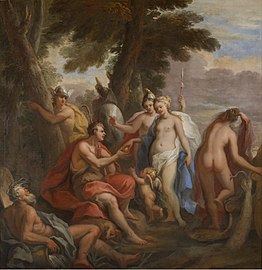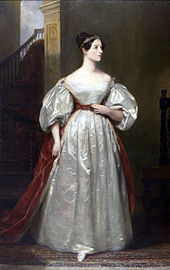Government Art Collection

The Government Art Collection (GAC) is the collection of artworks owned by the UK government and administered by the Department for Culture, Media and Sport (DCMS). The GAC's artworks are used to decorate major government buildings in the UK and around the world, and to promote British art, culture and history. The GAC now holds over 14,000 works of art in a variety of media, including around 2,500 oil paintings, but also sculpture, prints, drawings, photographs, textiles and video works, mainly created by British artists or artist with a strong connection to the UK, from the sixteenth century to the present day. Works are displayed in several hundred locations, including Downing Street, ministerial offices and reception areas in Whitehall, regional government offices in the UK, and diplomatic posts outside the UK.
History
The GAC dates its establishment to 5 December 1899, when
In 1935, an annual "picture fund" of £250 was authorised by
The first curator of the collection, Richard Perry Bedford, was appointed in 1946; he was succeeded in 1949 by Richard Walker, who served until 1976, and expanded the collection from several hundred to over 8,000 works. The GAC expanded its remit to include more modern works: its first work by a living artist was Ripe Corn by John Nash, acquired in the 1940s; and John Piper was commissioned to create new works for the British embassy in Rio de Janeiro in 1949.[2] By the 1970s, the GAC's modern artworks outnumbered the historical works.[3]
Dr Wendy Baron served as the director of the GAC from 1978 to 1997, and then Penny Johnson.[4][5] The collection was named the "Government Art Collection" in 1981.[6]
Other government bodies hold their own collections, distinct from the GAC. For example, the Ministry of Defence (MoD) had a separate art collection, which was dispersed to other public galleries and collections, including some to the GAC, in 2017.[7]
Collection
The collection includes works by many well-known British artists of the 17th and 18th centuries, including works by or after
Around two-thirds of the collection is on display in government buildings, with some items loaned for exhibitions, and the remainder at its premises in central London for conservation or awaiting re-display. Until 2020, the main premises were in Queen's Yard off
At the
Works of art continue to be added to the collection. In 2008, the GAC received £551,000 each year from the government, a sum that includes an acquisition budget of £220,000.[9]
Advisory Committee
Purchases and commissions are made with the support and agreement of the Advisory Committee on the Government Art Collection, whose members are appointed by the
- Examples of works from the GAC
-
Portrait of Elizabeth I, c.1585-1595, in the British Embassy in Washington, D.C.
-
Portrait of James II by Godfrey Kneller, 1683, in the British Embassy in The Hague
-
The Judgement of Paris by James Thornhill, 1704–1705, at Lancaster House
-
Battle of Blenheim by Joshua Ross, 1715, at the Cabinet Office
-
Portrait of Ada Lovelace by Margaret Sarah Carpenter, 1836, in Downing Street
-
Updated version of The Crossing Sweeper by William Powell Frith, 1893, in storage
-
After Turner: Venice, Fog Blowing up from the Adriatic, watercolour by Alfred East, at Lancaster House
See also
References
- ^ Collection in focus: Government Art Collection, ArtUK
- ^ The Government Art Collection, Jenny Kingsley, 24 March 2017
- ^ Government Art Collection at Number 10, Penny Johnson, 1 March 2012
- ^ Government Art Collection website
- ^ History of the Collection, Government Art Collection website
- ^ a b The Government Art Collection, fco.gov.uk, 17 August 2018
- ^ Ministry of Defence art collection, gov.uk
- ^ "Venues: Government Art Collection". Art UK. Retrieved 19 May 2023.
- ^ a b "Pictures for politicians". www.newstatesman.com. Retrieved 9 April 2019.







